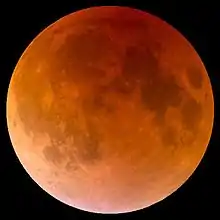December 1965 lunar eclipse
A penumbral lunar eclipse took place on December 8, 1965. At maximum eclipse, 88% of the Moon's disc was partially shaded by the Earth, which caused a slight shadow gradient across its disc; this subtle effect may have been visible to careful observers. No part of the Moon was in complete shadow. The eclipse lasted 4 hours and 1 minute overall.[1]

Visibility
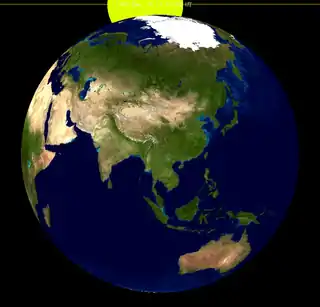
Related lunar eclipses
Lunar year series
| Descending node | Ascending node | |||||
|---|---|---|---|---|---|---|
| Saros | Date Viewing |
Type Chart |
Saros | Date Viewing |
Type Chart | |
| 109 | 1962 Jul 17 |
Penumbral |
114 | 1963 Jan 9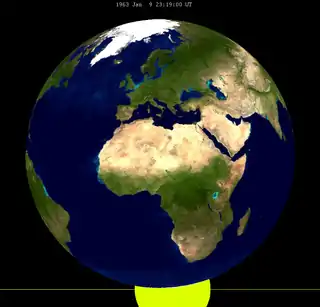 |
Penumbral | |
| 119 | 1963 Jul 6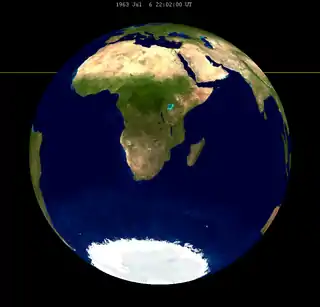 |
Partial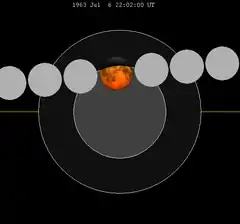 |
124 | 1963 Dec 30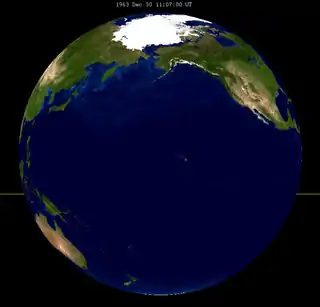 |
Total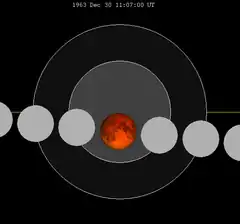 | |
| 129 | 1964 Jun 25 |
Total |
134 | 1964 Dec 19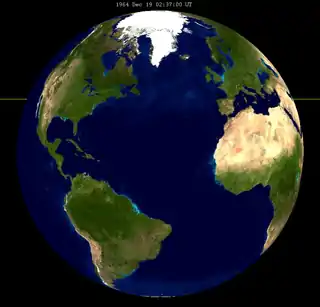 |
Total | |
| 139 | 1965 Jun 14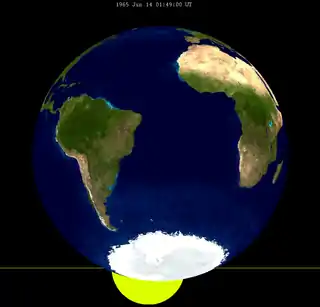 |
Partial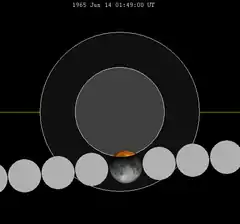 |
144 | 1965 Dec 8 |
Penumbral | |
| Last set | 1962 Aug 15 | Last set | 1962 Feb 19 | |||
| Next set | 1966 May 4 | Next set | 1966 Oct 29 | |||
Saros cycle
Lunar Saros series 144, repeating every 18 years and 11 days, has a total of 71 lunar eclipse events including 20 total lunar eclipses.
First Penumbral Lunar Eclipse: 1749 Jul 29
First Partial Lunar Eclipse: 2146 Mar 28
First Total Lunar Eclipse: 2308 Jul 04
First Central Lunar Eclipse: 2362 Aug 06
Greatest Eclipse of the Lunar Saros 144: 2416 Sep 07
Last Central Lunar Eclipse: 2488 Oct 20
Last Total Lunar Eclipse: 2651 Jan 28
Last Partial Lunar Eclipse: 2867 Jun 08
Last Penumbral Lunar Eclipse: 3011 Sep 04
Half-Saros cycle
A lunar eclipse will be preceded and followed by solar eclipses by 9 years and 5.5 days (a half saros).[2] This lunar eclipse is related to two partial solar eclipses of Solar Saros 151.
| December 2, 1956 | December 13, 1974 |
|---|---|
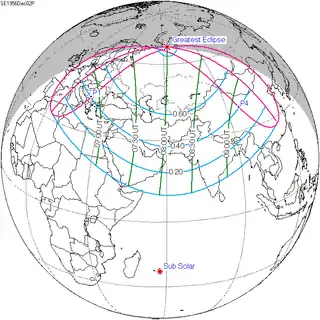 |
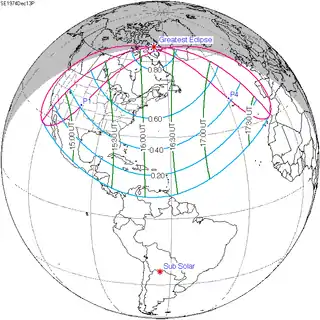 |
See also
- List of lunar eclipses
- List of 20th-century lunar eclipses
Notes
- Hermit Eclipse: Saros cycle 144
- Mathematical Astronomy Morsels, Jean Meeus, p.110, Chapter 18, The half-saros

